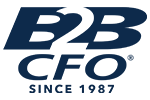
Gross Profit Optimization
Posted on August 16, 2021 by Rick Perrin
IMPROVE YOUR PROFITABILITY
Gross Profit (or gross margin) is a very important financial measure in almost every type of company. It is the profit from sales before administrative, sales and marketing expense, interest and other expense.
It is important to focus on Direct Margin as a component of Gross Profit:
- Direct margin equals sales less direct costs. For manufacturers and contractors, direct cost normally includes direct labor, raw materials and subcontracted costs. For distributors and retailers this is the cost of purchasing the product for resale. For service firms this is a bit trickier, but normally would include direct labor, materials, subcontractors, supplies and other variable costs that are directly attributable to the completion of the service.
- Gross Profit is Direct Margin less the cost of the operational overhead required to manufacture the product, provide the service or distribute the product. The key word is operational overhead. It is very important to separate operational overhead costs from administrative expenses, sales and marketing expenses and other expenses.
Gross Profit Optimization therefore is the process of optimizing, or maximizing the gross profit from producing the product or service. Every year the Operational Plan should include a number of projects to improve gross profit, after identifying the areas with the largest potential benefits. Here are the steps:
- Identify the direct costs. Set up separate ledger codes so you can track them. For example, most firms do not properly track labor…they put it all in one bucket. Direct labor should only include time spent producing the product or service; all other labor should be coded to indirect labor, including breaks, vacations, holidays, PTO, seminars, training, meetings, etc. Indirect labor is overhead and should be coded as such.
- Calculate the direct cost of each major input as a % of sales.
- Develop detailed strategies as to how to lower each of the direct costs. Assign teams, responsibilities and timelines for achieving specific cost reduction goals. Often the goals will be a percentage of that direct cost to sales. If direct labor has been running 20% and materials 30% of sales, develop specific action plans to bring labor down to 18% and materials to 28%. This will bring 4% directly to the bottom line. Detailed labor analysis and carefully planned purchasing strategies are required to achieve these results. There are often many different ways to lower or improve direct cost inputs. Assign teams to investigate improvement in the following:
- Material: Alternative materials, scrap reduction, alternative vendors, thinner or less material in the product, better negotiation, secondary vendors, inventory management, hedging, etc.
- Labor: Use of automation, use of overtime, labor efficiency improvement, time studies, labor rates, use of temps, higher or lower skill level based on the process, etc.
- Identify Direct Margins down to the product line and item level. Fix or rid the items that do not add value to the company.
- Continue to track the cost/sales % over time to monitor your results and make sure you hit your Direct Margin targets.
- Analyze the overhead costs (including the indirect labor) and set additional cost reduction goals for these expenses. Tackle the big ones first. Compare your costs with industry averages to benchmark your operations to your peers.
- Calculate the Gross Profit/Margin % of sales and track over time (Direct Margin less overhead assigned or applied). If you improve your direct margins and reduce your overhead, Gross Profit will improve.
- Remember to factor out sales price changes. Sales price increases will create higher margins and lower costs as a percentage of sales. Don’t allow the Team to take credit for lower cost of sales just because sales price increases, go after those costs!
By breaking down your margins and developing specific strategies for each category of cost, you may be able to add substantially to your bottom line!
Please contact me if you are interested in learning how to apply Gross Profit Optimization techniques to improve your company’s bottom line!

